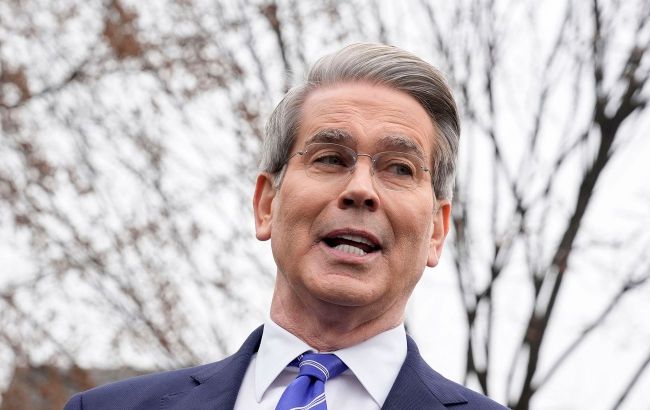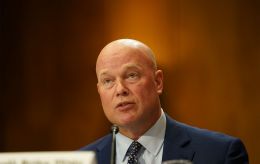US attempts to push China out of global economy - WSJ
 US Secretary of the Treasury Scott Bessent (Photo: Getty Images)
US Secretary of the Treasury Scott Bessent (Photo: Getty Images)
Washington is pressuring dozens of countries to sever trade ties with China. If they refuse, the countries may lose access to the US market, reports The Wall Street Journal.
Sources familiar with the negotiations told The Wall Street Journal that the Trump administration plans to use ongoing tariff talks to pressure US trade partners into limiting their ties with China.
The idea is to secure commitments from these partners to isolate the Chinese economy in exchange for reduced trade and tariff barriers imposed by the White House. US officials plan to leverage talks with more than 70 countries to ask them to ban China from routing goods through their territories, prevent Chinese firms from establishing operations there to evade American tariffs, and avoid absorbing cheap industrial products from China into their economies.
The Wall Street Journal notes that these measures are aimed at undermining China’s already fragile economy and forcing Beijing to come to the negotiating table with reduced leverage ahead of potential talks between Trump and Chinese President Xi Jinping. The specific demands could vary greatly depending on each country’s level of involvement with the Chinese economy.
According to sources familiar with the negotiations, US officials have discussed this idea in the early stages of talks with some countries. Donald Trump himself hinted at this strategy on Tuesday, April 15, stating that he would consider forcing countries to choose between the US and China in response to a question about Panama’s decision not to resume its role in the Belt and Road Initiative - China’s global infrastructure program for developing nations.
Main architect of the initiative
One of the driving forces behind the strategy is Treasury Secretary Scott Bessent, who is playing a leading role in trade negotiations following Trump’s announcement of a 90-day pause on mutual tariffs for most countries worldwide, except China.
According to people familiar with the discussions, Bessent presented the idea to Trump during a meeting on April 6 at Mar-a-Lago. In his view, securing concessions from US trade partners could prevent Beijing and its firms from circumventing American tariffs, export controls, and other economic measures.
This tactic is part of a broader strategy promoted by Bessent to isolate the Chinese economy - a strategy that has recently gained traction among Trump administration officials. While debates continue over the scope and severity of US tariffs, officials appear to largely agree with Bessent’s plan regarding Beijing.
It envisions cutting off the Asian country from the American economy through tariffs and possibly even delisting Chinese stocks from US exchanges. In a recent interview with Fox Business, Bessent did not rule out that the administration might seek to remove Chinese stocks from the market listings.
However, the ultimate goal of the administration’s policy toward China remains unclear. Bessent also said there is still room for negotiations over a potential trade deal between the US and China. Such negotiations, he noted, should involve both Trump and Xi.
On Tuesday, White House Press Secretary Karoline Leavitt read a new statement from Trump during a press briefing. It stated that a deal with China is not inevitable.
"The ball is in China's court: China needs to make a deal with us, we don't have to make a deal with them. China wants what we have ... the American consumer, or to put another way, they need our money," Leavitt said.
Nothing Is final yet
According to the Wall Street Journal, it is currently unclear whether the anti-China stance has been brought into negotiations with all countries. People familiar with the situation said that some countries have not heard any demands from US negotiators regarding China, although they acknowledge that talks remain in the early stages. Many expect that the Trump administration will eventually present demands related to China.
Bessent has previously shown his desire to secure anti-China commitments from US trade partners. In late February, he said that Mexico had offered to match US tariffs with those on Chinese goods as part of the tariff negotiations prompted by Trump’s measures against Mexico over fentanyl trade. Bessent called Mexico’s offer a nice gesture, but the idea has not gained much traction within the administration.
Since then, Bessent has played a central role in trade negotiations, taking the lead in talks on reciprocal tariffs after Trump announced a 90-day pause on April 9.
The Treasury Secretary is scheduled to meet with Japan’s Minister of Economic Revitalization as early as Wednesday and has drawn up a list of countries he believes may soon reach agreements with the US, including Japan, the UK, Australia, South Korea, and India.
China’s smart play
Meanwhile, Beijing is pursuing its trade diplomacy. This week, Xi Jinping visited Vietnam - a key US trade partner that has been heavily impacted by Trump’s tariffs - and signed dozens of economic agreements with the Hanoi government.
Peter Harrell, former senior director for international economics at Joe Biden’s National Security Council, believes that China sees the mutual trade standoff with Trump as an opportunity. At the same time, he says Beijing’s ability to counter US trade policy is limited - while the US remains a massive net importer, China is cutting its imports from the rest of the world and focusing on self-sufficiency.
Peter Harrell said that China was not going to replace the U.S. as a source of demand for products manufactured by many developing countries. He added that the economic consequences of this would be difficult for China, but he thought they were handling the political side of it quite smartly.
Trump tariffs
On April 2, US President Donald Trump signed an executive order imposing customs tariffs on imports from over 180 countries worldwide. Depending on the country and specific categories of goods and raw materials, the new tariff rates range from 10% to 54%.
However, a week later, on April 9, Trump suspended the new tariffs for 90 days and set a flat customs rate of 10% for all countries during this period.
On April 11, Trump canceled tariffs on smartphones, computers, certain components, and other electronics - most of which are imported from China.
Already, 130 countries around the world have expressed their willingness to begin negotiations with the US to reach agreements on the new customs tariffs.
Confrontation with China
On April 2, Trump issued an executive order imposing a 34% customs tariff on China. Beijing responded by introducing a similar tariff on American imports.
Trump then demanded the cancellation of this rate and raised tariffs for China to 50%. Beijing condemned this decision and promised to fight until the end.
A few days later, Trump increased tariffs for China to 85%, then to 104%, and on April 10, to 125%. With an additional 20% tariff on the opioid fentanyl, the total tariff rate for China currently stands at 145%.
On April 12, China raised tariffs on all US imports to 125%.
The tariff battle has since been paused. According to the WSJ, Washington has started a cautious dialogue with Beijing.

